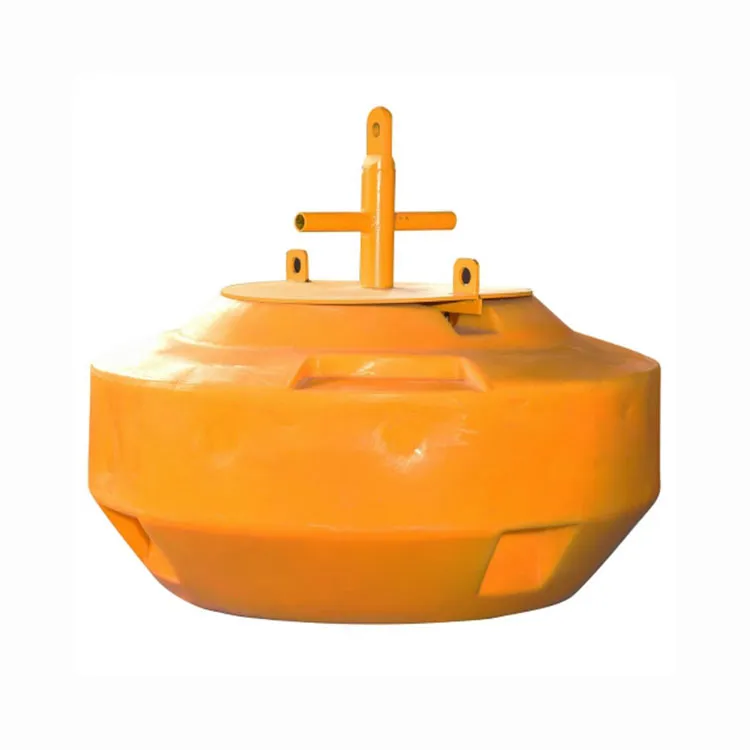What Is a Mooring Buoy and How Does It Work?
2024-10-15
Mooring buoys are essential components in maritime navigation and anchorage, providing boats and ships with a safe and secure means of staying anchored without using traditional anchors. They play a critical role in preserving marine ecosystems, managing waterway traffic, and protecting vessels from damage due to harsh weather or underwater obstructions.

1. What Is a Mooring Buoy?
A mooring buoy is a floating device anchored to the seabed with a strong connection, typically a chain, rope, or cable, that provides a secure point where boats or ships can be tied. Unlike a standard anchor, which is dropped from a boat and secures the vessel directly to the sea or lake floor, a mooring buoy is fixed in place and is designed to withstand strong currents, tides, and winds.
Mooring buoys are commonly found in harbors, marinas, and open-water mooring fields, and they are used for both recreational boating and commercial shipping. They are color-coded and marked to provide guidance on their purpose, as defined by maritime navigation rules.
2. How Does a Mooring Buoy Work?
A mooring buoy works by providing a strong, stable attachment point that keeps a vessel stationary without requiring the vessel itself to use an anchor. The system consists of several components:
a) Anchor System
At the heart of the mooring buoy system is the anchor. The anchor, which is typically buried or positioned on the seabed, is designed to hold the entire mooring system in place. Depending on the location, the anchor could be a concrete block, metal plow, screw anchor, or a deadweight anchor.
- Heavy anchors ensure the buoy stays in place, even in challenging conditions like strong tides, waves, or currents.
- The type and size of the anchor depend on the weight and size of vessels expected to use the mooring buoy.
b) Mooring Line
The mooring line connects the anchor on the seabed to the mooring buoy at the surface. This line is typically made of high-strength materials like steel chain or heavy-duty rope to withstand the constant movement of the buoy and the vessel tied to it.
- The length of the mooring line is determined by the water depth, tidal fluctuations, and the size of the buoy and vessel.
- In deeper waters, the mooring line is longer to accommodate changes in water depth due to tides and wave action.
c) Mooring Buoy
The mooring buoy floats on the water’s surface, marking the location of the mooring and providing a visible point for boats to secure themselves. The buoy is designed to support the weight of the mooring line and any hardware that connects the boat to the buoy.
- The buoy is often equipped with rings, cleats, or shackles, which are used to tie the boat securely.
- It is usually brightly colored and may have reflective markings, lights, or flags to ensure visibility both during the day and at night.
d) Pick-Up Line
Many mooring buoys have a pick-up line or pennant line attached, which is a small rope that hangs down into the water. This line allows boaters to easily retrieve and secure their boat to the buoy without having to manually reach down for the mooring line.
Once a vessel is secured to the buoy, the mooring system will keep it in place, allowing it to drift slightly with the wind and currents while remaining firmly anchored.
3. Benefits of Mooring Buoys
Mooring buoys offer several benefits to both boaters and marine environments:
a) Protecting Marine Ecosystems
Traditional anchoring methods can cause significant damage to fragile marine ecosystems, especially coral reefs, seagrass beds, and other underwater habitats. The process of dropping and dragging anchors can destroy these sensitive environments.
- Mooring buoys eliminate the need for individual boat anchors, reducing damage to the seabed and preserving marine life.
- They allow boats to secure themselves in protected or environmentally sensitive areas without disturbing the ecosystem.
b) Improved Safety and Convenience for Boaters
Mooring buoys provide a stable and convenient anchoring point for boaters, making the process of securing a vessel easier and faster. This is particularly beneficial in crowded marinas or when anchoring in rough weather conditions.
- Boaters do not have to worry about their anchor dragging or failing to hold during high winds or currents, as the mooring buoy’s anchoring system is designed to withstand such forces.
- The mooring buoy is a fixed point, so there’s no risk of boats accidentally drifting into other vessels or obstacles.
c) Reduced Congestion in Waterways
Mooring buoys help regulate boat traffic in busy waterways, marinas, and harbors. By providing designated anchoring points, port authorities can manage the number of boats in an area and ensure safe distances between them.
- Mooring buoys reduce the risk of collisions between vessels by providing organized and controlled anchoring locations.
- They make it easier for marinas and harbors to manage and accommodate a higher volume of boats.
d) Long-Term Cost Savings
For boaters who frequent the same harbors or mooring fields, using a mooring buoy can offer long-term cost savings. Once a mooring system is installed, boaters can use the buoy repeatedly without the need to deploy an anchor every time they stop.
- In areas with mooring buoy services, it’s often cheaper for boaters to use a buoy than to dock at a marina or port.
- Mooring buoys require less maintenance for boaters, reducing wear and tear on their own anchors and anchor lines.
4. Types of Mooring Buoys
Mooring buoys come in various shapes and sizes, depending on their use and the type of vessel they are intended to secure. The two most common types include:
- Permanent Mooring Buoys: These are designed for long-term use and are anchored with heavy-duty systems that can handle large vessels. They are often used in commercial harbors, marinas, and high-traffic areas.
- Temporary Mooring Buoys: Used for short-term anchorage, these buoys are common in recreational boating areas and can typically handle smaller boats. They are usually lighter and easier to deploy than permanent systems.
Mooring buoys are vital tools for safe, organized, and environmentally conscious anchoring. Whether you are a recreational boater, a commercial mariner, or a port operator, mooring buoys provide a secure, convenient, and eco-friendly alternative to traditional anchoring methods. By using mooring buoys, boaters can avoid damaging marine ecosystems, improve safety on the water, and enjoy peace of mind knowing their vessels are securely anchored. Whether you’re docking for the night or seeking a safe spot in a busy marina, mooring buoys are an essential asset for maritime activities.
Shandong Power Industry and Trade Co., Ltd. is a large heavy industry enterprise specializing in the research and production of ship anchor chains, ocean mooring chains, steel plate welded anchors, and mooring buoys. The company has established three major production bases in Suqian, Taixing, and Qingdao.Learn more about what we offer by visiting our website at https://www.andymarine.com. For questions or support, contact us at [email protected].



